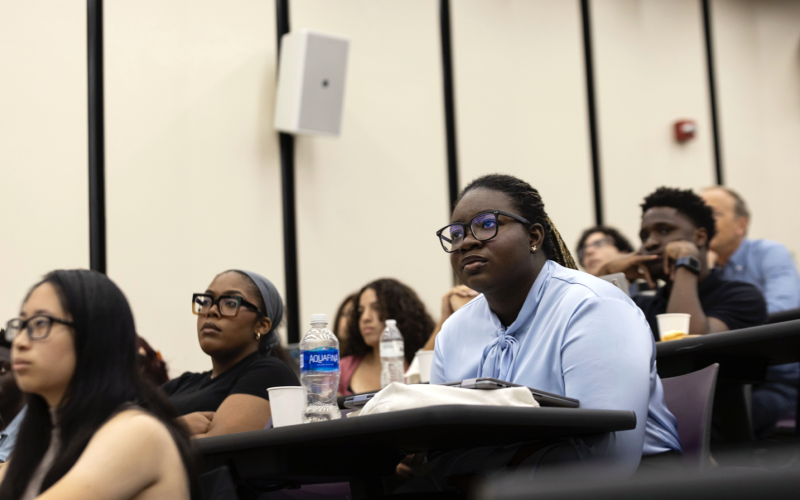Students Present Hands-On Research at UAlbany Summer Research Program Symposium

By Bethany Bump
ALBANY, N.Y. (Aug. 20, 2024) — More than three dozen undergraduates in the University at Albany Summer Research Program (UASRP) presented their research at a three-day symposium held on the Uptown Campus from July 24-26.
The intensive, eight-week residential program provides hands-on research opportunities to qualified, underrepresented undergraduate students from UAlbany and other participating colleges and universities who are interested in pursuing research and a graduate degree, particularly in a field related to science, technology, engineering and math.
Throughout the duration of the program, students live on campus and conduct research on a specific assignment under the direction and guidance of faculty members and researchers. In addition to receiving hands-on training in academic research and scholarly writing, students get to attend seminars, workshops, events and field trips.
This year, 38 undergraduates participated in the program, including 24 students from UAlbany, with others hailing from the Borough of Manhattan Community College, Fordham University, Franklin & Marshall College, Long Island University, Mercy College, Orange County Community College, St. Francis College, SUNY New Paltz, Wells College and Western New England University.
UAlbany students Rahma Jalloh and Kaeci Charles spent their summer working under the mentorship of Andrew Poulos, an associate professor in the department of psychology whose laboratory studies the neural pathways in charge of learning, memory and expressions of fear.
“When they said I was doing a neuroscience lab, I was like, what? I don’t know what I’m doing,” said Charles, a rising junior and human biology major who hopes to one day become a doctor working in reproductive health. “But being in a lab setting was much better than I expected and it really helped me grow my interest in neuroscience. I think it opened my eyes to other options and other science careers that are out there.”
Jalloh and Charles studied different parts of the brain involved in stress-enhanced fear learning (SEFL), a phenomenon that occurs in rats after they are exposed to acute stress and is similar to post-traumatic stress disorder in humans.
The pair examined the brain activity of rats that had been exposed to a series of at least 15 shocks in a specific context. When placed into a new context and exposed to a single shock, the rats demonstrated exaggerated behaviors associated with fear, such as freezing. This indicates a susceptibility for SEFL, which has been useful in understanding PTSD in humans, they said.
“Rodents are a good model because their brains are similar to ours,” said Jalloh, who transferred to UAlbany from New York City College of Technology.
The rising senior and psychology major hopes to one day become a mental health counselor, and is planning to pursue a master’s degree in mental health counseling from UAlbany.
Through UASRP, Jalloh gained a better understanding of the science behind stress, fear and trauma and was able to hone skills that will come in handy when she pursues the next steps in her academic career, she said.
“This program helped me learn more about the research aspect of doing grad school or post-grad,” she said. “And just sitting in the lab and watching the other grads talk about their aspects of research and presenting, I could imagine myself in their shoes. So now I’m really excited to apply for the master’s program here.”




